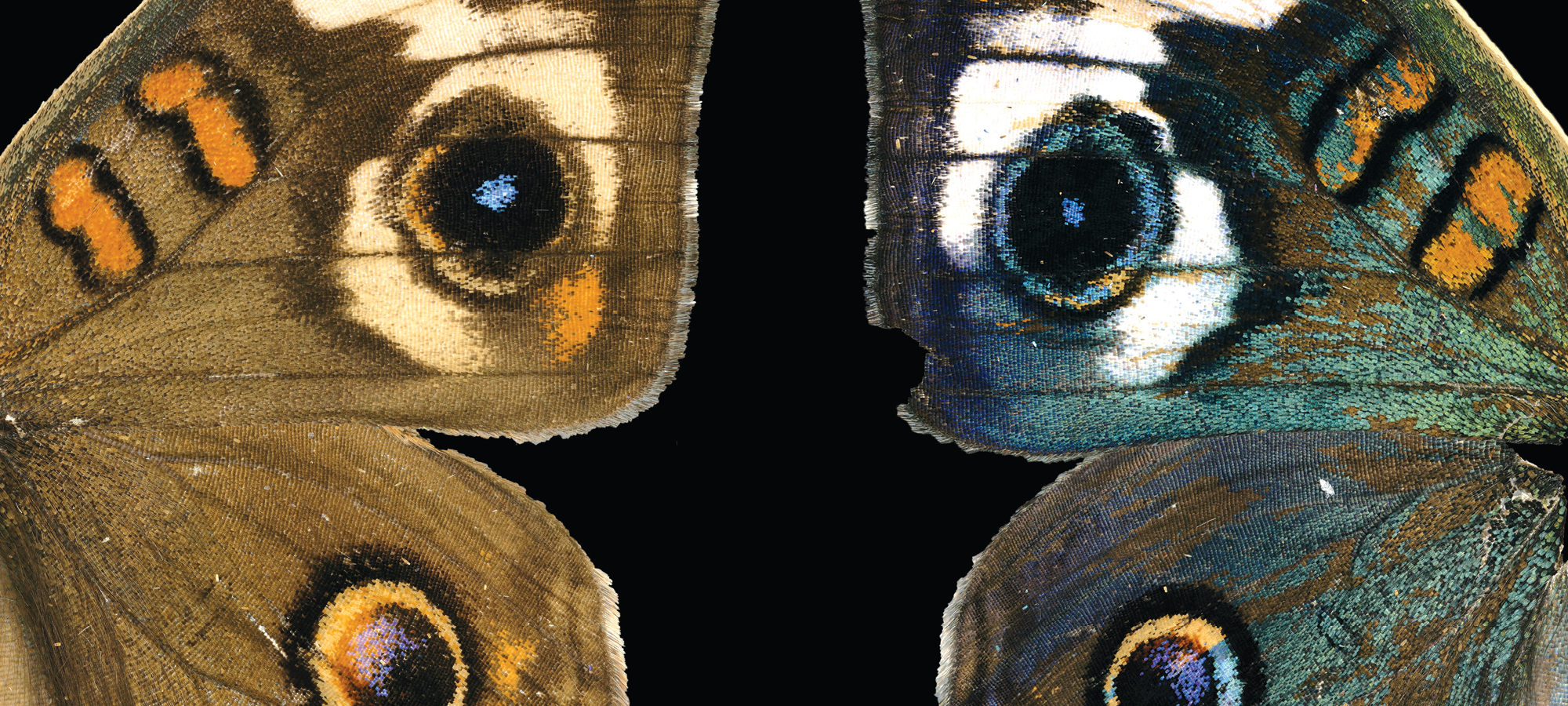
(Image courtesy Rachel Thayer)
The mysteries of coloration, revealed.
Nature paints with pigments—molecules that produce color by absorbing certain wavelengths and reflecting others. But some colors, especially vibrant greens and blues, are structural, created by the microscopic landscape of a material that bends and scatters light. These natural nanostructures are what make peacocks, beetles, and butterflies so vivid. Buckeye butterflies (Junonia coenia) are usually brown with small blue flecks (above left). Over the course of a year, a butterfly breeder selectively mated those with the most blue, creating blue-winged buckeyes. This experiment gave researchers, including Marine Biological Laboratory director Nipam Patel, an opportunity to study the evolutionary mechanisms at work in the scales that give butterfly wings their color.
They found that the blue coloration is indeed structural and is created largely by the lamina, the scales’ film-like bottom layer. The lamina reflects light like a soap bubble and is thicker in blue scales than brown. The simplicity of the lamina structure and its color-controlling function help the scientists identify which genes code for lamina thickness and study the evolution of structural color in nature. They’ve identified one gene, optix, that when deleted produces blue wings (above right), and they continue to search for other candidates.
